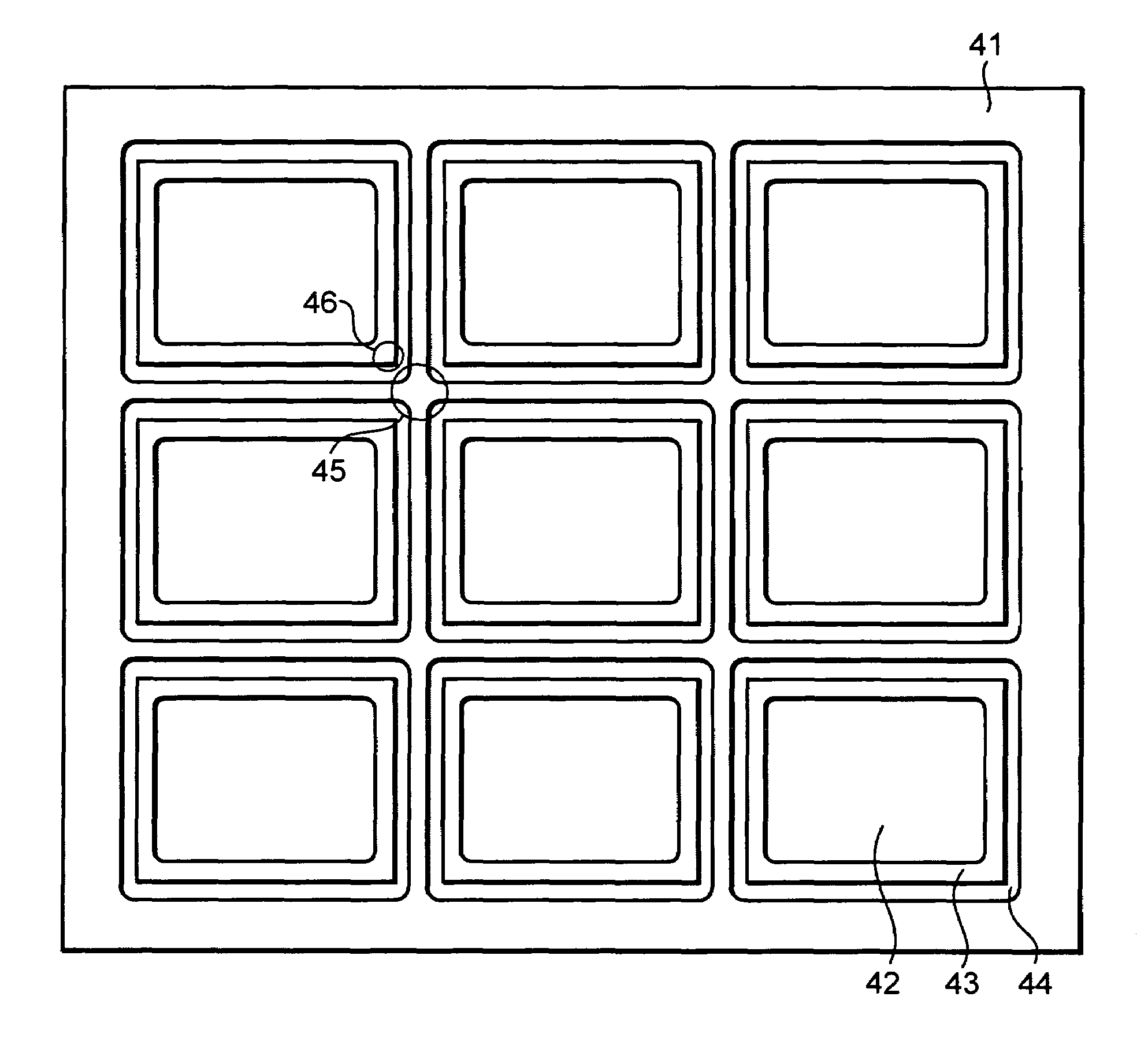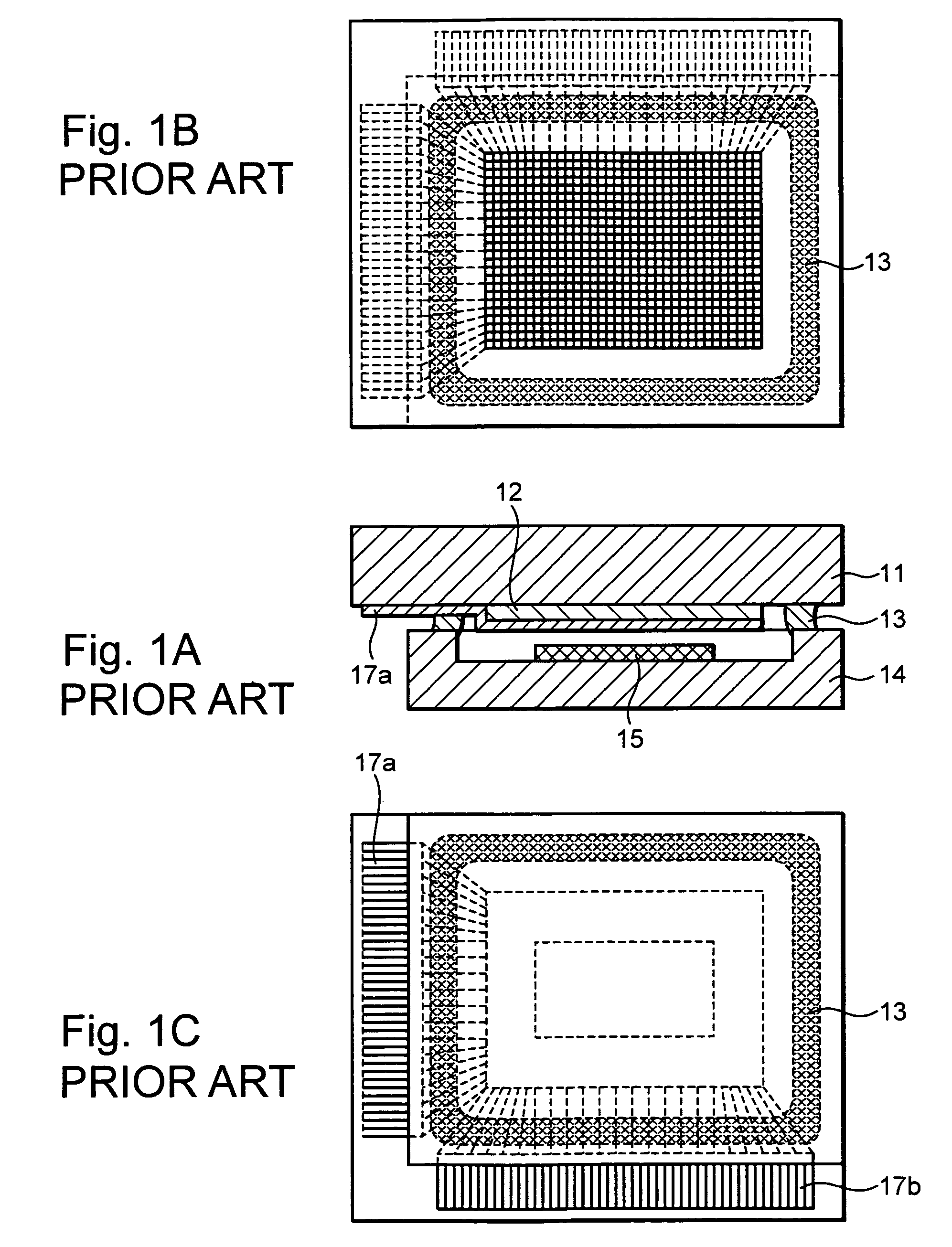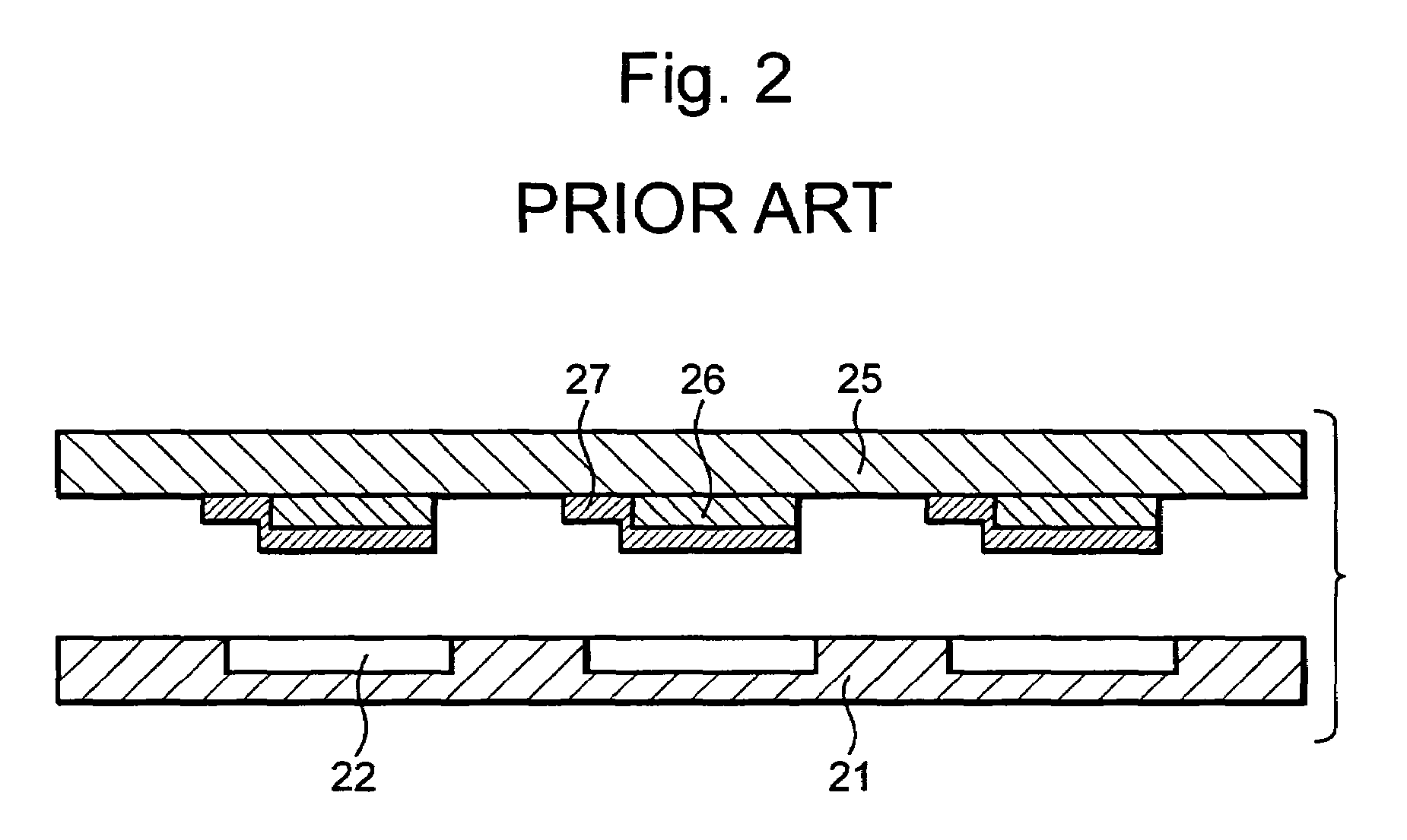Sealing glass substrate for organic EL material and method of manufacturing organic EL display
a technology of organic el and glass substrate, which is applied in the manufacture of electrode systems, electric discharge tubes/lamps, and discharge tubes luminescent screens, etc., can solve the problems of easy loss of light emitted by the atmosphere, difficult glass fabrication, and difficult glass fabrication, etc., to achieve easy control of the width of the sealing region, improve the sealing effect, and clean cut surface
- Summary
- Abstract
- Description
- Claims
- Application Information
AI Technical Summary
Benefits of technology
Problems solved by technology
Method used
Image
Examples
examples
[0046]A sealing glass substrate was manufactured using a non-alkaline glass substrate having a dimension of 230 mm×200 mm and a thickness of 1.1 mm. A resist film was pasted on the glass substrate. By means of sandblasting, nine recesses for accommodating organic EL laminates and adhesive escape grooves each corresponding to each recess were formed. Each recess had a dimension of 56 mm×46 mm and a depth of 0.5 mm. Each adhesive escape groove had a width of 1 mm and a depth of 0.5 mm and was disposed 2 mm outside the recess, that is, an adhesion region 2 mm wide was provided around the recess. The adhesion escape grooves were not connected and were isolated each other.
[0047]The thus manufactured sealing glass substrate was cleaned and dried, and then installed in a chamber with both a moisture content and an oxygen content not exceeding 5 ppm. A moisture absorber 0.3 mm thick was attached to the center of each recess of the sealing glass substrate. Ultraviolet light-hardening type ep...
PUM
 Login to View More
Login to View More Abstract
Description
Claims
Application Information
 Login to View More
Login to View More - R&D
- Intellectual Property
- Life Sciences
- Materials
- Tech Scout
- Unparalleled Data Quality
- Higher Quality Content
- 60% Fewer Hallucinations
Browse by: Latest US Patents, China's latest patents, Technical Efficacy Thesaurus, Application Domain, Technology Topic, Popular Technical Reports.
© 2025 PatSnap. All rights reserved.Legal|Privacy policy|Modern Slavery Act Transparency Statement|Sitemap|About US| Contact US: help@patsnap.com



